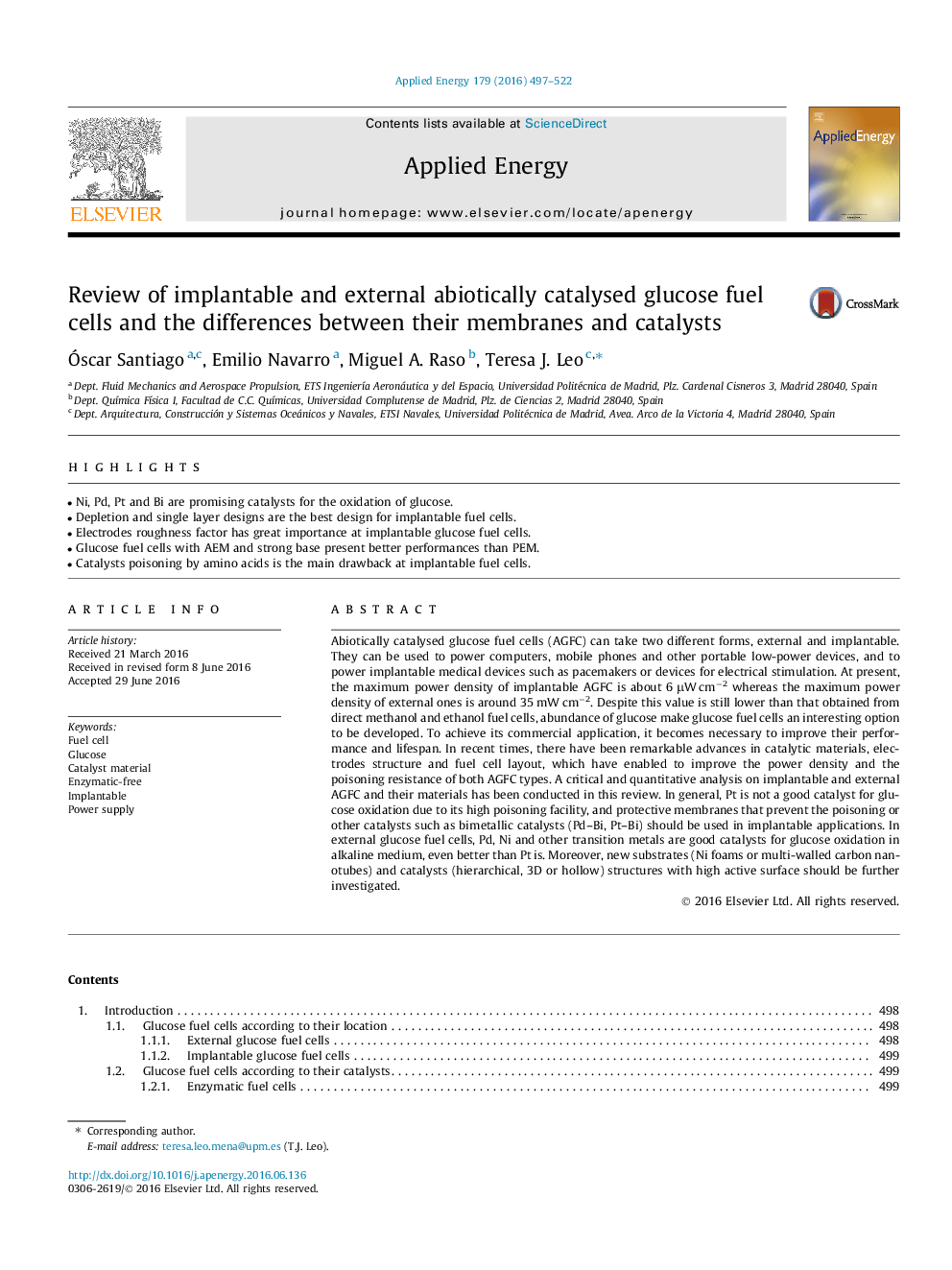| Article ID | Journal | Published Year | Pages | File Type |
|---|---|---|---|---|
| 6682181 | Applied Energy | 2016 | 26 Pages |
Abstract
Abiotically catalysed glucose fuel cells (AGFC) can take two different forms, external and implantable. They can be used to power computers, mobile phones and other portable low-power devices, and to power implantable medical devices such as pacemakers or devices for electrical stimulation. At present, the maximum power density of implantable AGFC is about 6 μW cmâ2 whereas the maximum power density of external ones is around 35 mW cmâ2. Despite this value is still lower than that obtained from direct methanol and ethanol fuel cells, abundance of glucose make glucose fuel cells an interesting option to be developed. To achieve its commercial application, it becomes necessary to improve their performance and lifespan. In recent times, there have been remarkable advances in catalytic materials, electrodes structure and fuel cell layout, which have enabled to improve the power density and the poisoning resistance of both AGFC types. A critical and quantitative analysis on implantable and external AGFC and their materials has been conducted in this review. In general, Pt is not a good catalyst for glucose oxidation due to its high poisoning facility, and protective membranes that prevent the poisoning or other catalysts such as bimetallic catalysts (Pd-Bi, Pt-Bi) should be used in implantable applications. In external glucose fuel cells, Pd, Ni and other transition metals are good catalysts for glucose oxidation in alkaline medium, even better than Pt is. Moreover, new substrates (Ni foams or multi-walled carbon nanotubes) and catalysts (hierarchical, 3D or hollow) structures with high active surface should be further investigated.
Related Topics
Physical Sciences and Engineering
Energy
Energy Engineering and Power Technology
Authors
Ãscar Santiago, Emilio Navarro, Miguel A. Raso, Teresa J. Leo,
